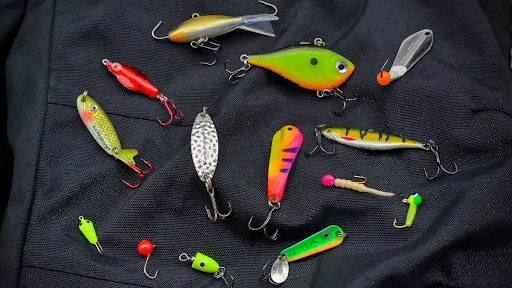For angling success, choosing the right fishing tackle and reel is not just a matter of choice; one needs to put together the gear suitable for its environment. Freshwater and saltwater fishing present a different set of challenges, species, and conditions. The right setup can make the day better or worse-whether you are casting on a still lake or keeping up with currents on the offshore.
If fishing is your passion, be it a beginner or a seasoned pro, then this guide breaks down the differences between freshwater and saltwater fishing, helping him or her pick the correct fishing tackle and reel for each environment.
Understanding the Core Differences
Before making a gear choice, knowing the distinctions between freshwater and saltwater is essential. Both are demanding and require lengths of interminable patience, but the actual environment differs profoundly with regard to the salinity of water, fish behaviour, and gear wear-and-tear.
Usually occurring in lakes, rivers, and ponds is freshwater-type fishing. Here, the targets are mostly species such bass, trout, crappie, or perch.
Activities in oceans, seas, and coastal estuaries define saltwater fishing. One could have to deal with several fish here, including mackerel, tuna, tarpon, or snapper.
In addition to the size and strength of these fish, the gear used would suit the conditions in which the fish are caught.
The Tackle Selection Process
- Tackle for Freshwater Fishing
Freshwater tackle is generally lighter, more sensitive, and made with finesse in mind. Lets see some of the light tackle that is generally appropriate for calm waters:
- Light rods and lines-for sensing those soft nibbles.
- Smaller hooks and lures – catering for fish that are smaller and more cautious.
- Soft plastics, crankbaits, and spinners – effective in low current environments for mimicking the prey.
Freshwater tackle is generally cheaper, but the longevity factor must never be overlooked. Such metals considered corrosion-proof and durable in nature must be the ones from which the components of the tackle are made.
- Tackle for Saltwater Fishing
- Saltwater fishing tackle has to stand-up to big fish in tough marine conditions. Some suggested options available are:
- Heavier rods with braided lines-for long runs and aggressive fights.
- Salt-resistance materials-Such as those made of stainless steel, titanium, or anodized aluminium to avoid any corrosion.
- Jigs, plugs, spoons, and live bait rigs-often on the large and flashy side to attract attention in deeper or turbulent waters.
- Saltwater fishing tackle will require greater variety, depending on whether the angler’s fish from the shore, from a pier, or deep-sea.
Select a Reel for Fishing Perfectly Matched to Your Needs
- The Freshwater Reel
- The freshwater fishing reel chooses balance and rewards precision.
- Spinning reels are most commonly used and are highly adaptable; they appeal to all skill levels and species.
- Baitcasters offer more control to manual operators targeting larger fish such as pike and musky.
- Ultralight lightweight for trout or panfish and lighter rods.
- Most freshwater reels don’t have to be entirely sealed or corrosion resistant, but that extra bit won’t hurt! They do require periodic cleaning to keep going.
- The Saltwater Reel
- Saltwater reels must balance size and strength-of fish and water alike.
- Saltwater spinning reels are the favorite for surf casting or reef fishing because of their ease of use and strength.
- Conventional reels, also known as trolling reels, are meant for deep-sea fishing where the targets are really big species—marlin, for example, or grouper.
- Seal drag systems and corrosion-resistant bearings are a must.
- Saltwater reels tend to be more robust—a fact that often goes hand in hand with a higher price. A worthwhile investment, though.
Maintaining Is Important
Whatever be the setting, maintenance should be carried out regularly. Equipment’s are rinsed with fresh water after every saltwater adventure to keep them free from salt accumulation and any possibility of corrosion. The reels should be cleaned and lubricated and kept safely for a longer time. Even with freshwater gear, occasionally inspecting for the smooth spin of reels and sharpness of the tackle is helpful.
Wrapping Up: Gear with Purpose
In the end, where you fish, what you target, and your degree of experience define fishing tackle and reels. While freshwater fishing is all about accuracy and grace, saltwater calls for strength and endurance. Working with gear in tune with your fishing surroundings increases your chances for the catch and ensures flawless equipment performance between one trip to the next.
Anglers are better cheese-lighted to make self-supported and confident decisions with a better understanding of the needs of each fishing-type and the willingness to spend on gear that suits those needs. From the peaceful stillness of the riverbank to the booming sound of the open sea, the right equipment guarantees that every cast counts.

